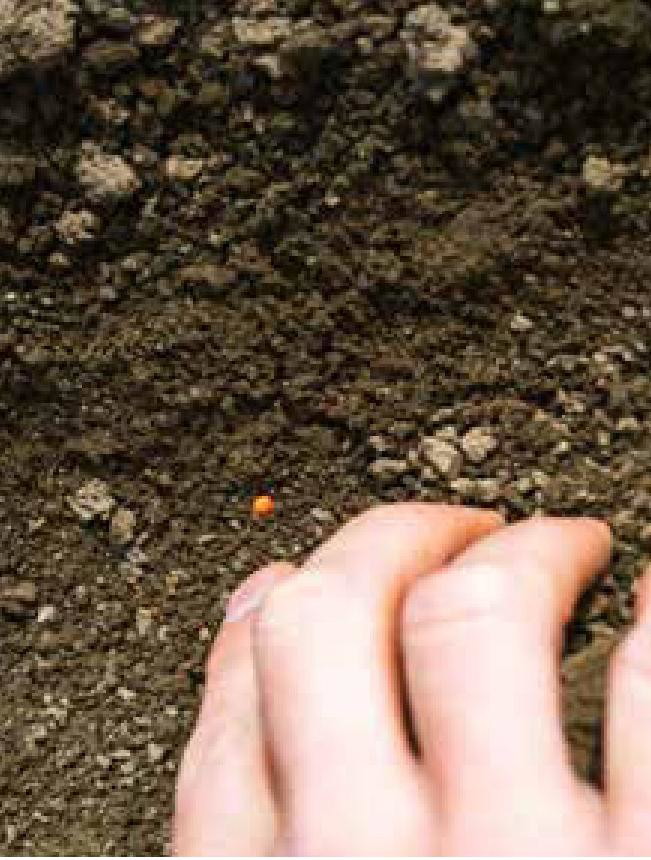roadtest
Meet the FARMDROID
There are now two FarmDroids in Australia: we ask the owner of one, Troy Qualischefski, for his insights on farming with this robot.
TROY Qualischefski, of Qualipac Farms in Queensland, bought his first Danish-designed Farmdroid FD20 this year. His machine is one of two in Australia. Four hundred FarmDroids have already been sold around the world, with the highest concentration in Germany. What’s great about this on-farm robot is that it has been designed by farmers for farmers. We get the lowdown on this cutting-edge piece of tech.
vWA Why the Farmdroid?
TROY The fact it has zero fuel consumption was attractive (it’s solar-powered), but it was more to do with the accuracy of the machine. Most people are used to planting with a tractor at five to seven kilometres an hour. This machine works at just under a kilometre an hour – so is incredibly accurate. It’s got little knives that cut in between the rows. It’s also lightweight, weighing only 800kg.
vWA It seeds and weeds?
TROY That’s what is unique to the machine. It seeds first, recording the position of each seed via GPS, then it weeds. It means you can weed earlier than usual. Traditionally, you always weed crops that have a bit of size about them so as not to bury them in soil. This machine is so accurate, plants can be much younger.
vWA Was it difficult to set up for your farm?
TROY The machine is easy to set up. But you do have to adapt to the machine. You need to put in the parameters of each crop and any obstacles via GPS, and your beds can’t be raised above a certain height. It’s not just another piece of equipment that you have in your shed. It’s a whole different farming system. It’s like a human.
vWA Do you need to be with the machine while it works?
TROY No, it’s fully autonomous and fully solar-powered. If it’s a cloudy, rainy day, it might work 24 hours a day. But the current battery pack on a sunny day will have enough energy to go through the whole night. If there are any issues, it will send a notification to your phone.
vWA Does it only plant certain crops?
TROY At the moment, it’s a smallseed planter. It’s best for winter crops, such as lettuce, cauliflower, broccoli... At the moment, it’s not capable of planting big seed crops, such as pumpkin, corn or beans.

Each seed planted with the FarmDriod is mapped via GPS, meaning weeding can begin earlier in a growth cycle.
As told to Anna Flanders

“ The biggest payback is going to be crop health. It’s not going to be the labour savings or fuel savings, etc, although they will be there ”
vWA Have you completed a full harvest?
TROY The robot arrived a little bit later than anticipated for our winter/brassica season. It will do a full season next year from March. But we have done tests on sections of our crops. Ground preparation has to be finer.
vWA How many rows does it plant or weed at the one time?
TROY Ours is a six-row machine. But you can buy four to seven-row machines.
vWA What are other benefits?
TROY We hope it will help to reduce our herbicide usage. It will help us to grow a healthier plant. And my prediction is our yield will increase by 10 per cent with no further inputs, possibly less.
vWA What does it cost?
TROY It’s actually really well priced – between $220,000- $250,000.
vWA How long will it take for the machine to pay for itself?
TROY It’s solar-powered, it may eliminate the need for chemicals and it’s autonomous, so I’m expecting it will pay for itself in four years.
vWA So what’s the biggest plus of this machine?
TROY The biggest payback is going to be crop health. Labour savings and fuel savings will be there. But the big ticket item will be potentially producing 10 per cent more crop on the same, or less, inputs.
vWA Final words...
TROY This is creating change. I know some people find it challenging, but you have to forget what you already know.
MORE INFORMATION
For more information on the FarmDroid, visit farmdroid.com.